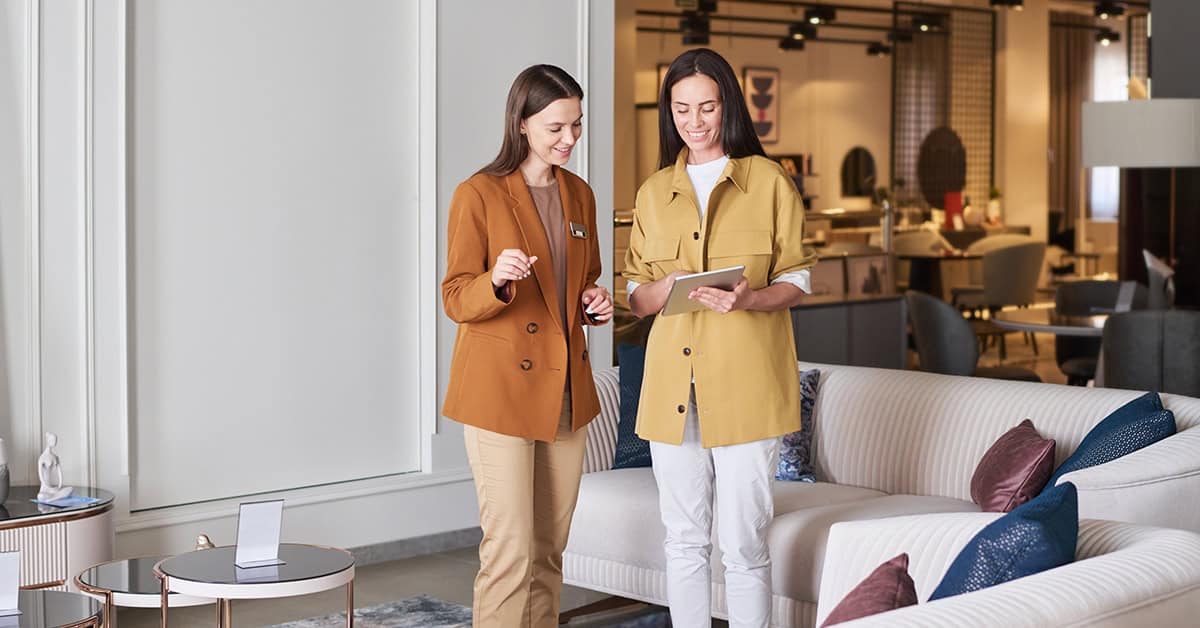
How does an OMS transform the in-store customer experience?
Commerce has changed – under the pressure of COVID-19, escalating e-commerce sales and new consumer shopping habits, retail stores have had to undergo significant transformation. With customers expecting a seamless, personalised and digitally-enriched shopping experience, retailers are harnessing technology solutions like the Order Management System (OMS) to rejuvenate the in-store customer journey.
But how is an OMS really revolutionising the in-store customer experience?
The changing landscape of in-store shopping
Traditional brick-and-mortar stores have faced fierce competition from online retailers. Consumers now have the convenience of shopping from the comfort of their homes, comparing prices, reading reviews and making fully informed purchase decisions.
The in-store shopping experience needs to offer something different.
Today, when shoppers walk into a retail store, they’re looking for more than just products on the shelves. They want personalised interactions, instant gratification and seamless shopping experiences. Meeting these expectations is challenging, but it’s essential for retailers to thrive in the modern marketplace.
To stay relevant, stores need a makeover.
How does an OMS support in-store customer experiences?
An Order Management System bridges the gap between online and in-store shopping.
Here are four key features of an OMS that will transform the in-store experience:
- Order in Store (Endless Aisle): With an OMS in place, customers can place orders for out-of-stock items while they’re in-store. This feature not only prevents customers leaving empty-handed but also opens the door to personalised upselling and cross-selling opportunities. The OMS ensures efficient order processing and fulfilment, further enhancing customer satisfaction after they’ve left the store.
- Store App: A dedicated store app empowers associates to provide customers with a digital shopping companion. Powered by the OMS, this app can offer full product information, real-time availability and order processing and payment capabilities to help store teams deliver exceptional experiences.
- Click and Collect (BOPIS): One of the most popular omnichannel fulfilment options that an OMS supports. Customers can place orders online and select their preferred store for pickup. The OMS orchestrates the entire process, ensuring that the order is ready for pickup when the customer arrives at the store.
- Store Appointments: Inspired by the luxury industry, customers can schedule appointments for in-store visits, which can be planned and personalised with complete customer information available to store associates.
Inspiring examples of in-store customer experiences
- Apple: Apple stores have revolutionised the concept of retail spaces. Their stores are designed to be more than just places to purchase Apple products; they are interactive and educational hubs. The “Today at Apple” programme offers free workshops, creative sessions and events, transforming the store into a community space where customers can learn, experiment and engage with the brand on a personal level. Apple’s stores are a testament to how creating an immersive, educational and community-focused retail environment can foster customer engagement.
- Sephora: Sephora’s retail experience is built on the idea that cosmetics should be explored, not just purchased. Their stores feature a wide range of interactive elements, including makeup stations for customers to try out products, in-store beauty classes and augmented reality tools to visualise different makeup looks. With a vast array of product offerings, Sephora encourages customers to experiment, learn and play while shopping for beauty products, enhancing their in-store experience and encouraging repeat visits.
As the retail landscape continues to evolve, the digitisation of stores will be mandatory. By embracing technology like the OMS and aligning with customer expectations, retailers can create a shopping environment that is not only competitive but also enjoyable and engaging for their customers.


